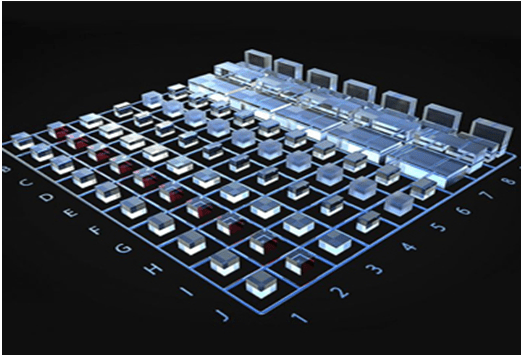Storage systems are the foundation of data centers since they house data held by businesses, governments, and private individuals. Several types of data centers can fulfill the needs of various application fields, such as cloud storage, the (industrial) internet of things, or business models, such as software as a service or streaming portals, among others.
Data must be accessible as soon as possible in specific cases. In other circumstances, storing the data in an organized fashion takes precedence. All data centers have one thing in common: they manage massive volumes of data for commercial and consumer applications.
Data Centers Today
Data storage technology in data centers mainly comprises hard disk drives (HDD), solid state drives (SSD), and tape storage. SSDs will expand significantly in importance as the ultimate storage technology in data centers.
While HDDs provide the most storage space per dollar spent, SSD technology offers far better speeds, with reading and writing rates exceeding HDD capabilities. High-speed performance with low latency, for instance, will play a more significant role in competitive rapid data storage with 5G wireless communication networks.
The overall trend in data center storage technologies will be mixed or hybrid systems that combine SSD, HDD, and tape storage to meet high-speed requirements while still profiting from the incomparable low cost of HDD storage.
HDD manufacturers are working on incorporating the SSD-typical NVMe protocol directly into HDD storage devices to increase the interoperability of traditional HDD storage in an upcoming SSD-heavy environment in data centers. The preliminary experimental findings have been reported to be encouraging, with sample units expected to be ready soon.

Image Credit: Iridian Spectral Technologies
The Importance of Interconnects
The data center connection technology, often based on fiber optic cables and traditional copper cable interconnects, is just as important as the data storage technology itself.
Fiber optic cables are viewed as the ultimate solution for data center interconnects, not just for external connectivity but also within the data center architecture, as the need for high-speed accessibility continues to rise.
Single-mode or multimode fiber optic cables link data center gear to one other and the outside world. Transceiver modules are the connector components that send and receive data from an electronic device through optical fibers.
Fiber networks employ single-mode or multimode transceivers depending on the type of fiber. Multimode fiber connections are frequently used in data centers since their prices are still significantly cheaper than single-mode connections.
A distinction between multimode and single-mode transceivers regarding cost can be found in the light source utilized on the device. These sources include LEDs, VCSELs, or various lasers, such as DBR, DFB, Fabry-Perot, or tunable laser assemblies. It should be noted that LEDs or VCSELs utilized in multimode devices are less expensive than the lasers used in single-mode transceivers.
Multimode fibers transmit a wider variety of wavelengths than single-mode fibers, but the transmission distance is much shorter. Nonetheless, multimode fiber lengths are often enough for data center applications.
For wavelength division multiplexing, transceivers rely heavily on interference filters. Filter types such as short-pass and long-pass filters are used to separate or combine wavelengths. Tunable lasers and transceivers are becoming more prevalent due to technological advancements and decreased tunable device costs.
The integration of tunable lasers and wavelength division multiplexing can lead to a significant enhancement in network capabilities, particularly in the context of data center fiber infrastructures. The use of tunable lasers requires the incorporation of specific filter types, such as notch filters or dichroic filters, in transmitter devices.
Moreover, solid etalon filters provide both wavelength selectivity and tunable wavelength locking in integrated tunable laser assemblies (ITLAs).
Optical Connections for Data Centers
The cost of data center interconnects is a crucial consideration, as many transceiver devices and fiber optic cables are necessary. As such, achieving high optical performance at a minimal cost is vital when producing datacom filters.
Iridian specializes in designing and manufacturing custom optical filters or etalons that meet the specific requirements of clients, ensuring the highest levels of optical quality, robustness, reliability, and cost-effectiveness.

This information has been sourced, reviewed and adapted from materials provided by Iridian Spectral Technologies.
For more information on this source, please visit Iridian Spectral Technologies.